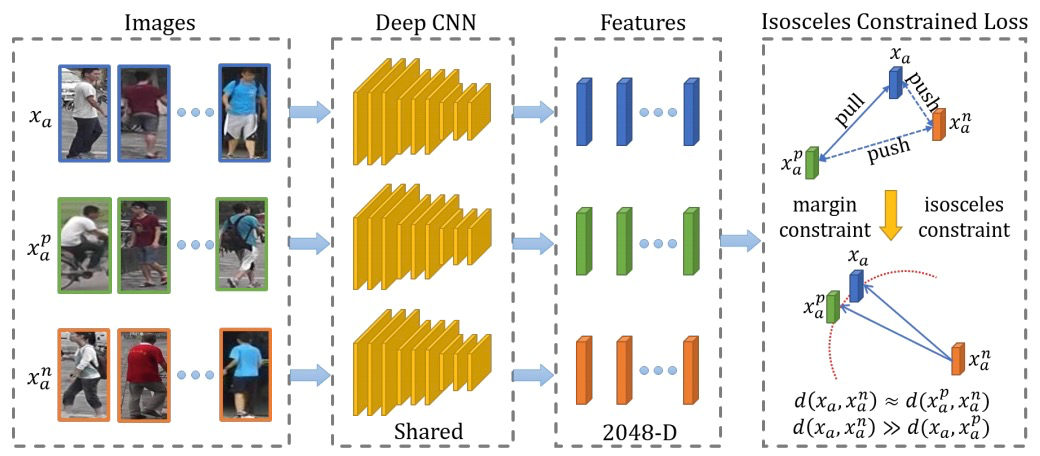Recently, one paper on person re-identification is accepted by the journal IEEE TIP. The full name of IEEE TIP is Transactions on Image Processing, which is an international journal on computer vision and image processing with an impact factor of 6.79 announced in 2020. The paper information is as follow:
Furong Xu, Bingpeng Ma, Hong Chang, and Shiguang Shan.“Isosceles Constraints for Person Re-identification”, IEEE Transactions on Image Processing (TIP), 2020. (Accepted)
Person re-identification is a challenging retrieval task. The same person has the great differences due to the different positions, time, etc., and the different persons have the great similarity due to the same view, posture, etc. Batch hard triplet loss (TriHard) has achieved certain success on this task. However, it is difficult to excavate triplets globally. TriHard only focuses on triplets in one batch, instead of the triplets in the global scope. When the distance margin between the matched pair and the mismatched pair is constrained, there is no guarantee that the triplets in the global scope also satisfy the margin constraint. To further constrain the distance of sample pairs in the global range, some methods add a fixed-value distance constraint for the matched pairs or the mismatched pairs. However, using the same fixed-value constraint for all matched/mismatched sample pairs is too strict and can easily lead to the distortion of the optimized feature space. To achieve the purpose of adaptive optimization of the sample pair distance in the global range, this paper proposes an isosceles constraint. The idea of an isosceles constraint is that when two samples are close enough, their distance to any other sample should be as equal as possible. Conversely, if there are multiple samples at equal distances from a certain two samples, then the two samples should be very close with high probability.
In this paper, by constraining the distance between the mismatched samples in the triplet, the distance between the matched pairs is infinitely narrowed. When the isosceles constraint combined with the margin constraints of the triplets, the distance difference between the matched and mismatched pairs in the global scope is further increased. Similarly, the isosceles constraint can also be used directly for the quadruplet loss. The overall framework of isosceles constraint used for triplet loss is as follows:

In summary, the main contributions of this work include: 1) The isosceles constraint is applied to the triplet loss and the quadruplet loss, further increasing the distance difference between the matched and mismatched sample pairs in the global scope; 2) The effectiveness of isosceles constraints is verified on multiple person re-identification datasets; 3) The effectiveness of isosceles constraints is verified on the different backbone and retrieval tasks (including vehicle re-identification and general fine-grained recognition).

